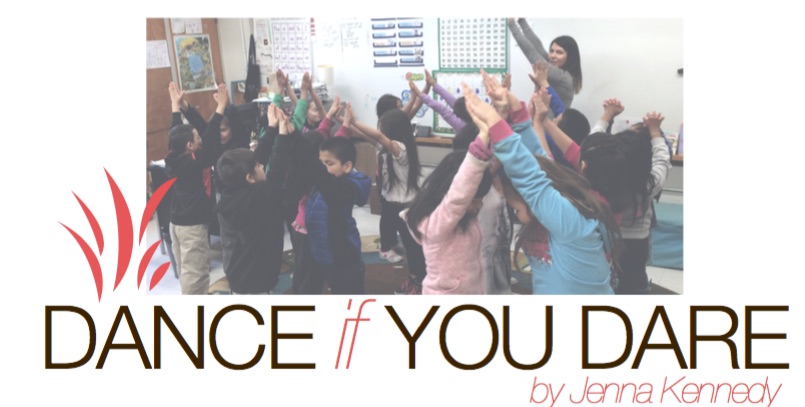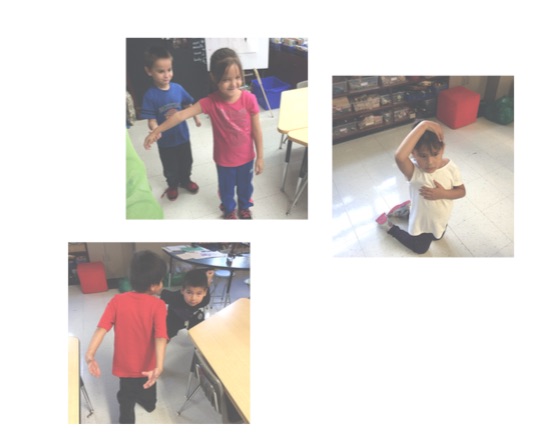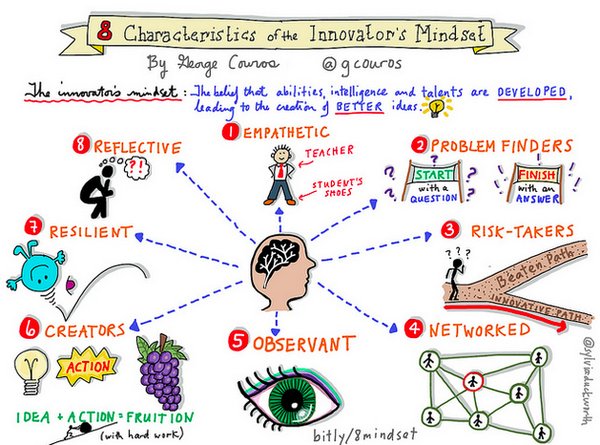
We’ve all seen it. She’s the life of the party when she starts bending her knees and shaking her hips to the beat of the music. She’s dancing for the whole room and loving every minute! Get your mind out of the gutter – I’m talking about the baby in the room! From a very young age there is no denying that dance is a part of human nature. But somewhere along the way the love of dance begins to dim as some children realize that dancing means taking a risk. How can we keep dance “normal” as children begin to age?
Reflecting on “The 8 Characteristics of the Innovator’s Mindset”, from author and principal George Couros, I found myself thinking a lot about innovators being Risk Takers, and how it applies to dance in my classroom. I am always amazed with the participation levels of my grade 1 students when it comes to taking a risk and dancing! The trick is to warm them up to the experience by introducing new things slowly; making it comfortable, easy, and inviting. I mean, don’t we have to do this with adults as well?
WHERE TO BEGIN
I start the day with basic stretches and body isolations every morning. This makes dance a regular part of our routine, not a “scary” experience, and the kids really enjoy feeling their muscles work, getting their blood moving, and listening to the latest Justin Bieber or Taylor Swift song.
HOW TO CREATE A DANCE CULTURE IN YOUR CLASSROOM
Once students are comfortable moving in the morning, we progress to a super simple choreographed dance that incorporates a little more energy. My absolute favourite time of the year is October when we learn “Thriller” by Michael Jackson (a very simplified version). The kids go crazy for dancing like a zombie, especially on Halloween when they are in their costumes!
RISK TAKING
After they have practiced these skills they begin to think of themselves as “dancers” and are much less intimidated by the risk involved in dance expression. This is when the characteristics of innovation can really be seen. Students can work together and create short dance pieces on any topic, and they feel comfortable moving their body. For example, we created dances titled, “Snowflakes”, “Autumn”, and “Feelings”. All were beautiful, empowering, and totally created by the students.
I was going to blather on about all of the amazing things that have come out of exploring dance with my class, but when I revisited the Manitoba Dance Curriculum I found these excerpts that really summarize all of my thoughts and practices.
“Dance enriches a vibrant culture and is integral to human life. It has the power to illuminate, deepen, broaden, and enhance human experience. Dance offers a unique way of perceiving, interpreting, and communicating diverse life worlds. As one of the oldest and most primal of the performing arts, dance has existed across all cultures and historical periods. It has always been a socially significant component of all civilizations, and remains a relevant symbolic tool for people around the globe today.
The fusion of body action and cognition manifested in the dance Framework promotes self-initiated learning, active problem solving, openness, collaboration, innovation, socialization, empathy, flexibility, critical and divergent thinking, and risk taking. Dance has the potential to promote responsibility and leadership and to prepare and inspire future citizens of the world to understand and address the most critical challenges of their times.”
As teachers, and citizens, let’s work hard to keep dance bright in the eyes of our children as they age. They payoffs are great. And, even if dance is a little uncomfortable for you, reflect on why? Is risk taking holding you back?
Jenna Kennedy
Strathcona School
Cluster 1971
Dance Blog-Final Copy


